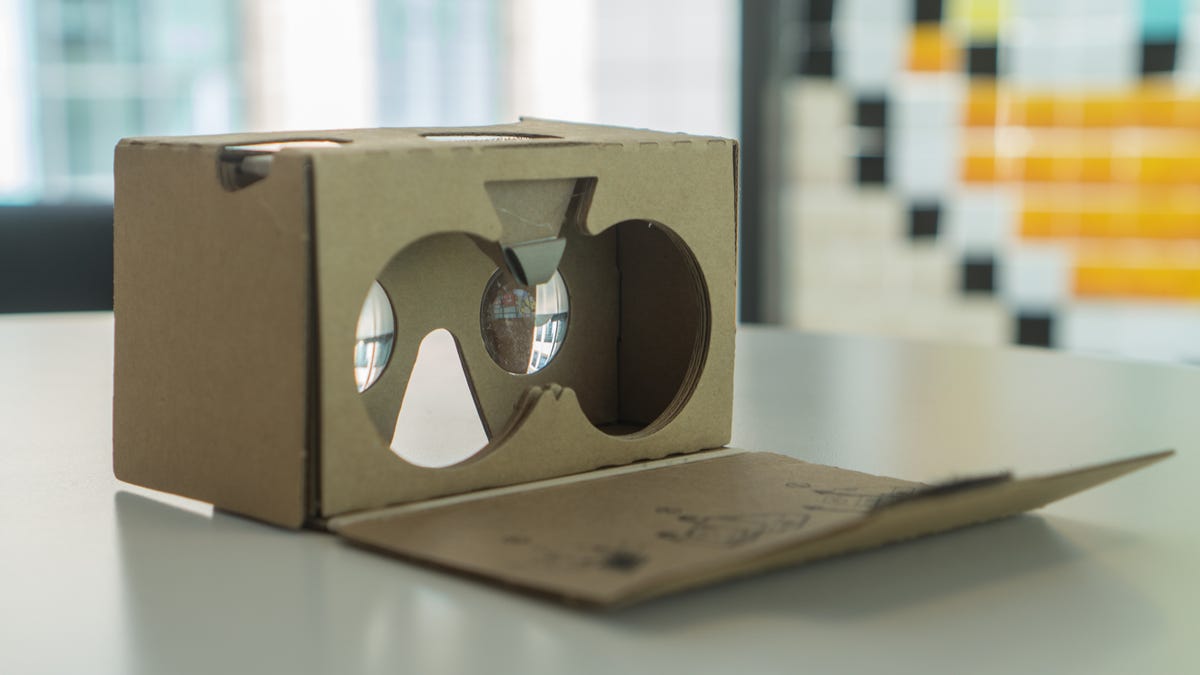VR possibilities at Google I/O 2016: Four things I'm hoping to see
Commentary: There's another wave of virtual reality on the horizon, and it's all about mobile.

Google might be ready to launch a whole new vision of VR. And honestly, in a year filled with big VR hardware all over the place, I'm more interested to hear about what Google's got in the works than anyone else.
Google's I/O developer conference is just around the corner. There are a lot of VR-targeted developer sessions this year, including what looks like a big keynote-style presentation delivered by Google's new head of VR, Clay Bavor. Google I/O is, historically, where big ideas get announced: Android Wear, Google Glass and Google Cardboard.
Google Cardboard has been Google's little Trojan horse into virtual reality. In a landscape of expensive, somewhat closed-off rigs, Cardboard is the closest to "open" that exists: apps run on both iOS and Android across dozens of phones, and YouTube offers an increasing flow of 360-degree videos to watch. Most people will never get the chance to buy a virtual-reality headset, and many haven't tried one.
Google Cardboard needs to be a little more like the Samsung Gear VR.
But Google Cardboard is foldable and cheap. It comes free with newspapers. You might get one at a concert. It's not perfect, but it's cool enough to keep around on my desk. And I definitely want to see what Google has in the works for a follow-up.
With that in mind, here's what I'm looking forward to most...assuming they actually happen.
Room-sensing with a next-gen headset
You might not be aware of what computer vision can achieve, or what Project Tango is. But first, know that depth-sensing 3D cameras have been in Google's prototype Project Tango tablets for years, enabling VR headsets to get a sense of advanced motion without needing a sensor bar or sensor boxes like PC-based VR rigs such as the Oculus Rift and HTC Vive use. You could wander a room with a wireless headset on, and it would know the size and layout of the room. Ever since I tried out Project Tango in VR a couple of years ago, I've thought about it sneaking its way into next-gen mobile VR headsets. Oculus is already working on these ideas, but Google will probably get there first.
Project Tango already senses 3D depth and can incorporate augmented reality. Will it end up on a VR headset next?
It's already known that Movidius is working with Google on some next-gen devices, building on technology the chipmaker uses in the DJI Phantom 4 to help the drone automatically avoid obstacles, and in a standalone USB neural compute stick.
These low-power chips could also be used to identify real-world objects for on-the-fly augmented reality. All of this could make for more advanced VR, and even AR. And we may hear a lot more on that soon.
Cardboard-compatible headsets come in all forms, like View-Master, but they're not very advanced. Yet.
Stepped-up hardware for better-looking games, and new Android tools
Google Cardboard's apps don't look that fantastic. Samsung Gear VR's apps and games tend to look better. Chalk that up to more optimized hardware, and higher-resolution displays on Samsung's Gear VR-compatible phones. Google's next wave of VR could possibly allow a certain range of phones to work with stepped-up features, allowing for virtual reality that would feel smoother and crisper. Maybe Google Cardboard could be the entry-level experience, and a souped-up Google VR could be where deeper experiences lie.
There's also the possibility and promise of a new version of Android that supports VR on a far deeper system level. What if the whole Android OS can be controlled entirely through VR? A step-up VR headset should ideally be capable of running a whole suite of new apps and functions, hopefully without ever removing the headset from my face. It would be a leap from VR as a novelty to VR as a true tool.
New controllers, and hand-scanning
You can't do anything with your hands in Google Cardboard: all it has is a single button on the side to click on things. Working with wireless controllers, and maybe even incorporating hand-scanning using those embedded Project Tango smart cameras, could allow for two-handed interaction and allow apps where things can be interacted with. For simulation and design, that's crucial. Maybe Google could unveil input hardware. Something's needed here. Much like the Microsoft HoloLens and Meta 2 enable hand-tracking and gesture controls, a new Google VR headset could have that too if it incorporated smart cameras.
Consider that Google acquired Tilt Brush, one of the best VR painting apps and a killer VR app in general. It currently runs on HTC Vive off a PC, using the Vive's advanced motion controllers. But imagine using Tilt Brush on mobile.
What will this year's update to Jump be?
VR-recording cameras, too
Google's Jump array of GoPro cameras, unveiled last year at Google I/O, was a stopgap measure to create immersive 360-degree video for entrepreneurs. But now more commoditized, polished 360-degree cameras are popping up for both everyday and professional use. Google could launch a new camera specifically tooled for VR. And, considering the explosion of filmmakers interested in 360-degree video, and how few really great VR cameras exist yet, it could be another helpful step to ease VR "filmmaking." And Google might throw in some new ideas...or, new toolsets and apps.

